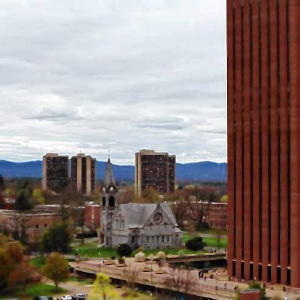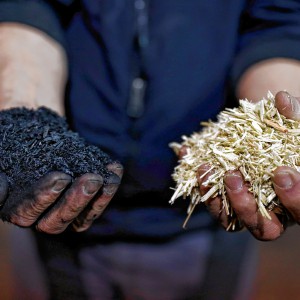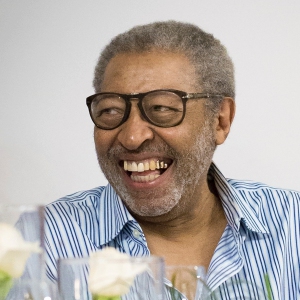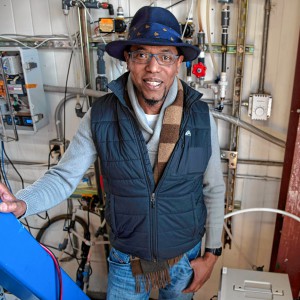Amherst Together wraps up 3-year effort at fostering connections
| Published: 07-20-2017 9:36 PM |
AMHERST — A line of T-shirts unveiled prior to the town’s 250th anniversary in 2009 played off Amherst residents’ penchant for vocally sharing their opinions and vigorously debating issues by unveiling the phrase “Amherst, MA — where only the ‘h’ is silent.”
Yet because many who live in Amherst not only want to talk, but also want to be right when they do, not all voices and viewpoints are being heard, limiting the ability for people to grow and thrive, Carol Ross says.
“A lot of times we bump heads because we’re not listening to each other,” said Ross, the media and climate specialist who has led the Amherst Together project. “That’s what we need to have more of, is to listen to each other.”
Ross recently reflected on the three-year initiative as her work comes to an end, with her salary cut from the fiscal 2018 budgets, prepared by interim Superintendent Michael Morris and Town Manager Paul Bockelman and approved by Town Meeting in the spring. At the outset, the schools contributed two-thirds of the money for her $48,000 salary, with the remainder from the town for the 30-hour-a-week position.
“I’m really happy with the work that happened,” Ross said.
Created during a time that schools and the town were facing significant tensions, including a school year in which former high school math teacher Carolyn Gardner was subjected to harassment and a series of racial incidents, the program was designed to identify issues that affect public schools and the community, and then find collaborative ways to solve problems. The aim was to expand the opportunity for all residents to share their views.
Ross created the Amherst Together tag line, “Let’s love where we live.” In addition to bringing people together and fostering connections — as the Amherst Together name implies — getting people to actually listen to each other is one of the main achievements, Ross said.
She discovered that while many speak about specific values Amherst has, these often don’t match the lived experience of those in the community. “We don’t always walk our talk,” Ross said.
Article continues after...
Yesterday's Most Read Articles
Amherst Together was the brainchild of former Superintendent Maria Geryk, who sought what is known as a “collective impact” program using methodology to link education and community, as recommended by Harvard educator Ronald Ferguson.
Geryk viewed Amherst Together as a way to help close the achievement gap in the schools and promote development and success of all youth. Late Town Manager John Musante got on board with the program, noting that its success would be defined by how soon Ross would “put herself out of business.”
Though equity and inclusion were key components of the program, Ross said there is a mistaken assumption that Amherst Together was aimed strictly at confronting racial issues.
During the three years, Ross oversaw the creation of videos, photographs and art displays and tried to be as engaged as possible with the community.
Films made include “Aspirations,” in which seven adults were asked to speak about their aspirations and then had seven children paint those aspirations onto the adults’ faces, and “The Pre Race Meal,” which invited eight community members to focus on a racetrack, who would be racing and why, and answer the question of how everyone can live together.
Ross also points to the success of the initiative in becoming a vehicle for college students to interact with the community, such as through interviews and showing off their filmmaking skills.
One of the critical elements of Amherst Together was the Perceptions report, which derived from interviews with 456 residents by University of Massachusetts Amherst graduate students overseen by Flavia Montenegro-Menezes, a UMass landscape architecture and regional planning professor, and Jennifer Stromsten, who completed a master’s degree in regional planning.
Ross said this report remains a gift to the community as it produced extensive data about how people see Amherst, its good and bad, and the gaps and contradictions. There was also a dialogue about values, identity and well-being.
“I think the Perceptions report, and being able to tap into the community and listen to people, was huge,” Ross said.
There was also collaboration from community partners. Ross said Amherst College embraced Amherst Together through its Center for Community Engagement office, W.D. Cowls President Cinda Jones commissioned artist Ariel Jessop to do a mural in the North Amherst Mill District with the Amherst Together logo, and a UMass graduate student based his master’s thesis on Amherst Together as a case study, comparing it to a similar initiative in California.
Despite no longer funding the program, Morris said the public schools are better informed through Ross’ work and positive influences, in particular connecting college students to the schools.
“I appreciate how often there were connections with the schools in ways that hadn’t been seen previously,” Morris said.
He anticipates keeping the momentum going. A central office reorganization ensures that equity and diversity remain at the forefront of discussions, he said. There will also be professional development, with second-year teachers getting an equity and diversity course. There will be a teacher-level restorative justice program at the high school for the first time, and the Amherst Education Foundation is funding a teacher grant to put on a workshop on undoing racism.
Amherst Human Resources Director Deborah Radway said Amherst Together highlights the need for continued professional development, and said the “stellar” Perceptions report can be capitalized on.
Amherst is embracing principles of Ross’ program in everyday work, Radway said. She points to the profile drafted when the search was launched for a new town manager in 2016 and which led to the hiring of Bockelman.
“All of our objectives are to continue it in all of our lives and as a community,” Radway said.
Though Ross said Amherst Together was always intended to be a three-year initiative, she would have liked to see more building on the ideas, interacting with the community and branding the program.
“I think it could have used one more year to pay off the work we did,” Ross said, explaining that much of the first year was spent on dispelling myths about what the program would be.
That early work included appearing at events, such as the weekly farmers market and the Celebrate Amherst block party, and printing T-shirts and mugs.
“It takes a lot to get people to know you exist in any initiative,” Ross said.
Ross said she is trying to find a home where the work might be able to continue in some form, even though she won’t be part of it. She said this may just be a pause, as Amherst Together is poised to be sustainable and can still exist and grow. The University-Town of Amherst Collaborative is one place where it might be taken up.
One of the challenges, she said, comes because there is no metric to measure qualitative results.
Still, Ross said Geryk should be praised for coming up with the innovative approach to reach students and families.
“Without her, we wouldn’t have had support structures in place such as Amherst Together or the ARPS (Amherst Regional Public Schools) Family Center,” Ross said.
Scott Merzbach can be reached at smerzbach@gazettenet.com.

 Federal probe targets UMass response to anti-Arab incidents
Federal probe targets UMass response to anti-Arab incidents Locking up carbon for good: Easthampton inventor’s CO2 removal system turns biomass into biochar
Locking up carbon for good: Easthampton inventor’s CO2 removal system turns biomass into biochar William Strickland, a longtime civil rights activist, scholar and friend of Malcolm X, has died
William Strickland, a longtime civil rights activist, scholar and friend of Malcolm X, has died Advancing water treatment: UMass startup Elateq Inc. wins state grant to deploy new technology
Advancing water treatment: UMass startup Elateq Inc. wins state grant to deploy new technology
